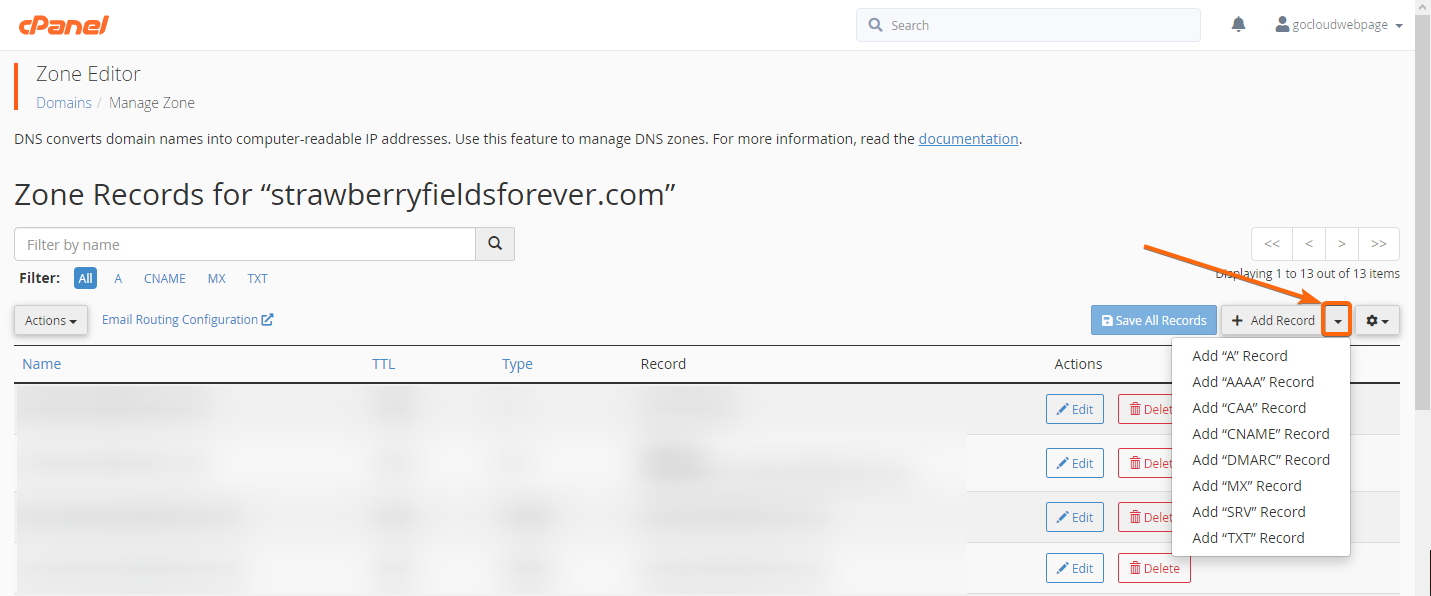From the Zone Editor page, you will notice 3 DNS record types are available for you to add:
A Record
- Address record
- This is the usual type of DNS record you will encounter. The domain name (e.g. www.cldy.com) is pointed to an IP address (e.g. 23.108.103.24) which is stored by your web hosting service provider.
CNAME Record
- Canonical name record
- A CNAME record is what you use when you have another domain registered to keep your visitors still be routed to your main website. For example, typing in facebok.com into the web browser would still have the domain pointed to facebook.com. Setting up a CNAME record makes this possible.
MX Record
- Mail exchanger record
- An MX record is what you use when you want to have your emails rerouted from your current domain, to another existing email domain that you have. To know more about updating your MX record, click here.
There are other types of DNS records you can add by clicking on Manage, under any of your listed domains:
The Zone Records page will now load, and from here you can click on the dropdown for Add Record.
You will see the other types of DNS records you can add, such as:
AAAA Record
- quad-A record
- Just like an A record, it points the domain to an IP address – specifically an IPv6 address – which is more intricate and specific than the regular IP address (IPv4). The IPv6 address consists of a combination of alphabetical and numeric characters in hexadecimal notation, and is usually in 20 or more characters.
CAA Record
- Certification authority authorization record
- CAA records, by its name, allows a domain to authenticate that it supports and is eligible to be issued an SSL/TLS certificate.
DMARC Record
- Domain-based Message Authentication, Reporting, and Conformance
- The DMARC record (policy) is set for you to secure the email access on your domains. It works as a security layer enforced for your email domains to be less susceptible to spam and unauthorized messages.
SRV Record
- Service record
- SRV records are used mainly for VOIP and IM services (as opposed to MX records which cater mainly for emails). When setting up an SRV record, you need to include port configuration and an IP address specific to that port.
TXT Record
- Text record
- A TXT record is more of a “notepad” compared to the other DNS record functions. It simply stores information as to where a domain routes to, but does not serve the function of domain pointing.








